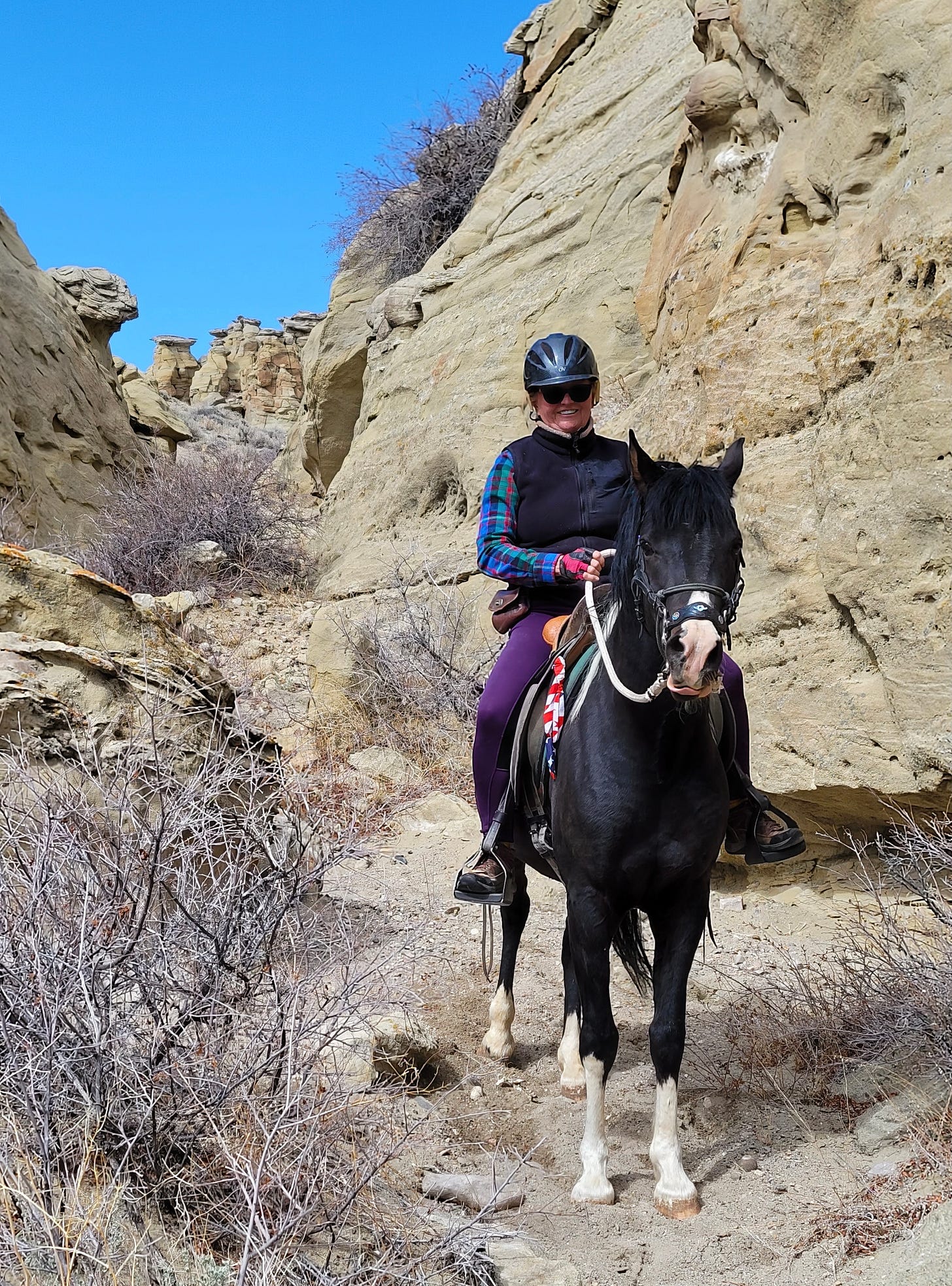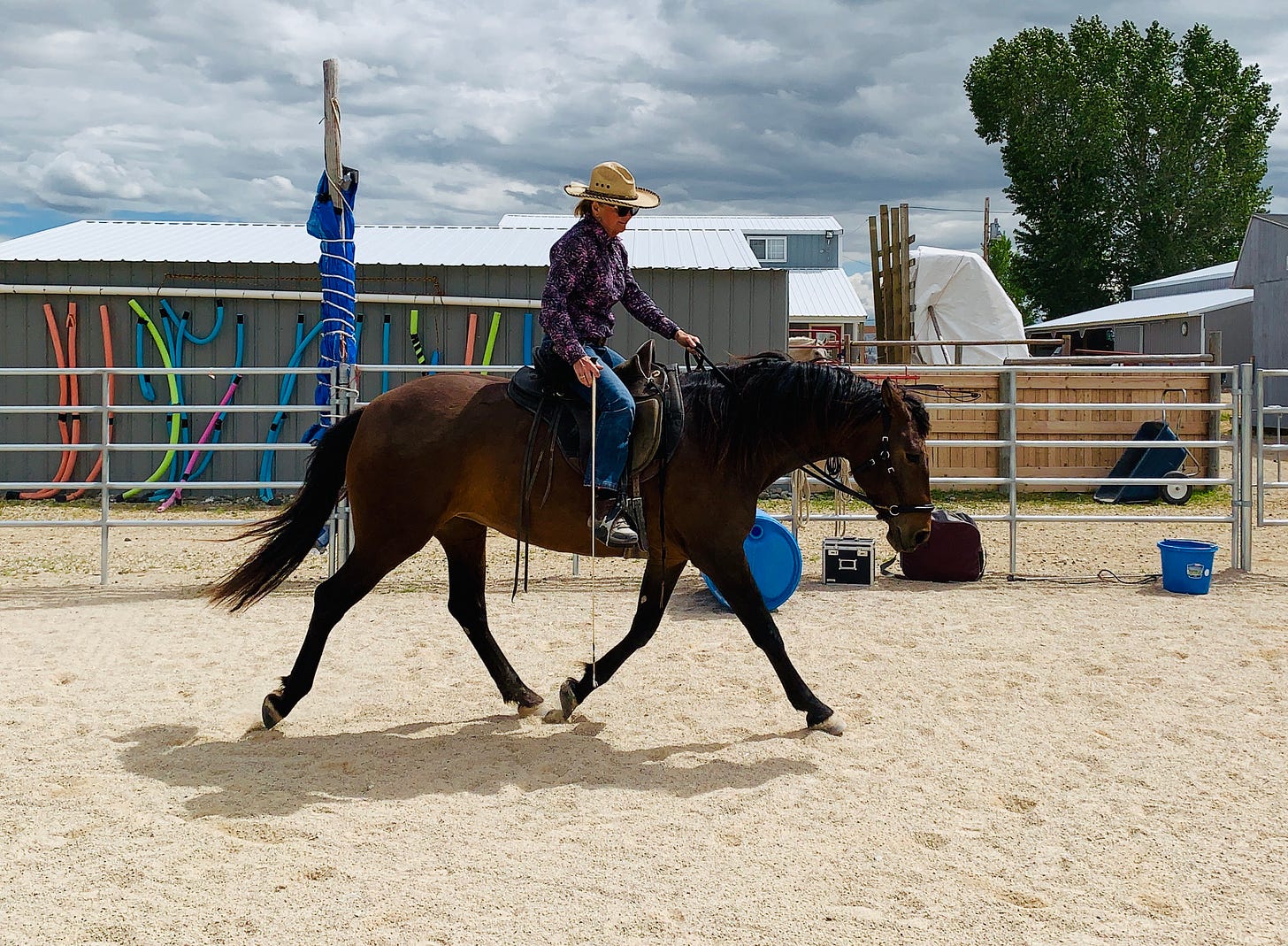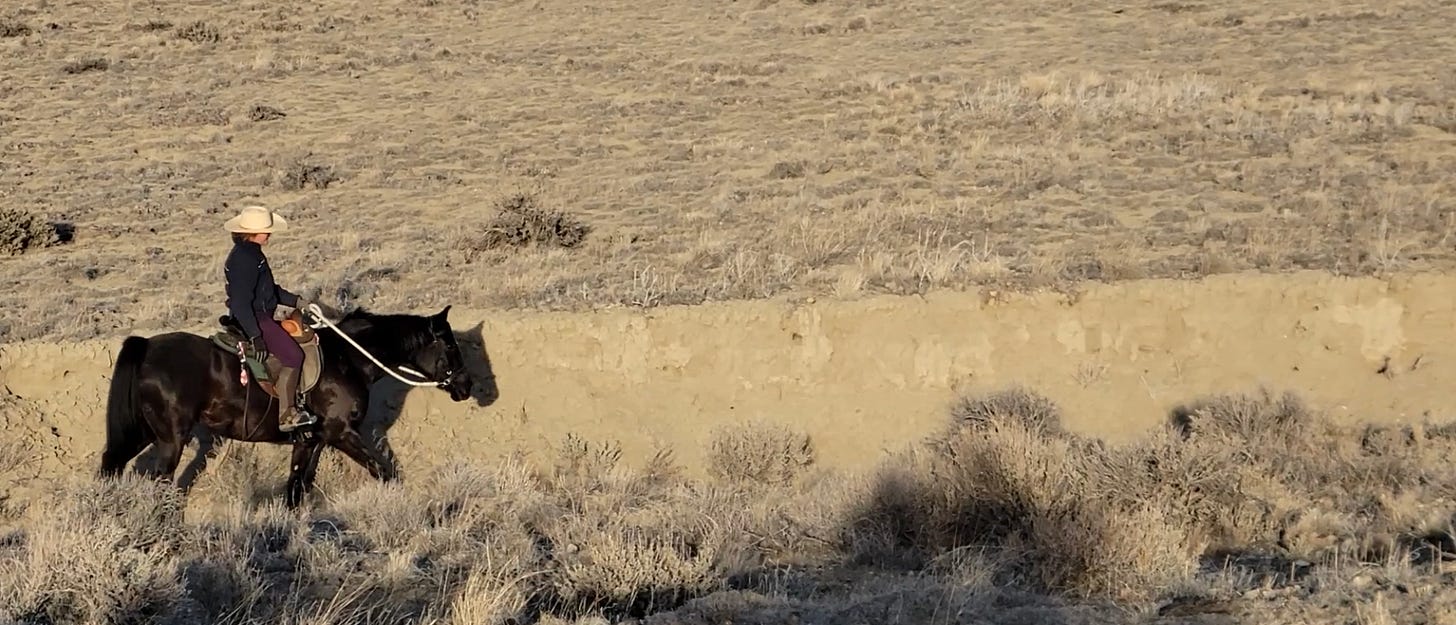Review of Priorities, Where Safety Fits In.
Relationship Based Horsemanship Substack One Year Anniversary
January 13 will mark one year since I began writing about Relationship Based Horsemanship on Substack. Documenting my personal journey with our horses on the HAAP farm has been fun and challenging.
Sharing my insights into how you might have a better relationship with your horses while getting your goals achieved has made me consider carefully how I express myself. My goal has been to help people preserve the bond they have with their horses while doing what they love: playing and riding with their thousand-plus-pound companions.
I discuss safety often, but it isn’t my number one priority in any aspect of my life.
If I had to rate where I place safety, I agree with Mike Rowe: safety comes third, not first. If we put safety first, we would only watch horses from afar. We wouldn’t even attempt a relationship, because any interaction with a horse carries risk.
In order of priority, this is how I see the interactions with my horses:
BOND (how good is our relationship)
MASTERY (how good is my horsemanship)
DILIGENCE (how good am I at predicting and dealing with danger)
Interestingly, if you work on the first two, they will lead you to number three, organically. Working on your relationship and improving your knowledge and skills will make you safer when with your horses. An attitude of diligence or heedfulness will make you see trouble and prevent unwanted consequences.
For example, safety becomes more likely when you can look at your horse and understand her state of mind. Some horses are easier to read than others, so as mastery of understanding the personalities of horses develops, your ability to know how much to ask of your horse at any given moment can make the difference between success and a train wreck. Horses have good and bad days, just like us. Horses have their strengths and weaknesses, just like us.
Good horsemanship is all about understanding strengths and weaknesses, making the most of strengths, and mitigating weaknesses. This applies to both us and our horses. Safety becomes the natural outcome of good horsemanship.

The use of protective equipment, like helmets, is a hot-button issue for a lot of riders. You’ll see in most of my photos, I don’t wear a helmet. I choose to wear a helmet when I have a horse that is less predictable and I’m in a more unpredictable environment, like on a trail with hard ground and rocks. Helmets can be uncomfortable/very hot to wear, so balancing safety with comfort is a judgment call for me.
I will never disagree with helmet use. If you wish to wear a helmet, I will never argue with that. If events have to buy insurance coverage that requires helmet use, I have no argument with that. If I choose to participate in those events, then I will wear a helmet. I don’t see that being an unreasonable request.
However, as I have discussed with a number of people, wearing a helmet can give some individuals a false sense of security or cause them to take more risks than they would without it.
This has held true as cars have become safer to drive. Studies have shown that people do take greater risks today as a result of the advances in car safety. They drive faster and drive distracted knowing their car is much safer today than before.
I attended an endurance ride here in Wyoming a while back. While waiting to hear how people were doing along the trail, a rider came in with a nasty head laceration along with joint injuries as a result of unintentionally coming off her horse. Her accident caused her to drop out of the race. She was wearing a helmet with an oversized brim and a rib cage protector at the time.
I did not know this lady, so I didn’t quiz her as to the circumstances of her accident.
But here is what crossed my mind:
What circumstance caused her horse to react in such a way as to dislodge his rider?
Did her protective equipment interfere with her ability to react appropriately?
Did she overly rely on the protection the helmet and rib protector provided her, waiting to make a decision to intentionally dismount that could have prevented this accident?
Could more knowledge and skill have prevented this accident?
Could greater diligence have prevented this accident?
Her helmet and rib protector likely prevented more serious injuries than she sustained, but could her accident have been prevented altogether? No one will ever know, but I have seen and heard about enough horse accidents to make me wonder.

Here’s what I know for sure: I would never trade my skill and knowledge for a helmet. And I don’t make decisions when riding based on whether or not I’m wearing one. I encourage all of you to do the same.
I also encourage every horse rider to constantly improve their horsemanship and the training of their horse so as to make an accident less likely. This is just one more reason why I’m motivated to write these articles.
Enjoy your relationships, be excellent and be safe!
For more information about the amazing horses that have been and are being bred on the HAAP farm, go to www.arabpinto.com
If you have questions for me about any of my posts, please feel free to contact me at isabellefarmer@gmail.com or visit our Facebook page at www.facebook.com/arabpintos



